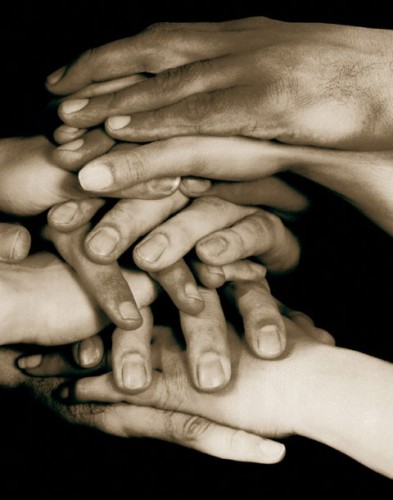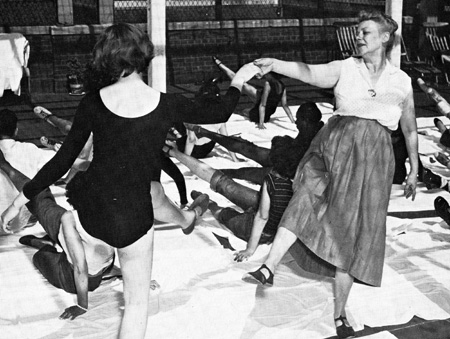A New Way of Doing Dance/Movement Therapy, Part I

Image taken from: http://www.mirasol.net/ed-recovery/self-help/online-newsletter/sunflower-may-2006.html
First I want to preface this post by clearly stating my standpoint as the writer. I am a second year DMT & C graduate student studying at Columbia College Chicago. Emphasis here on student… I am a not a professional with clinical experience. I have a specific background and have certainly had a specific experience while at Columbia that may or may not reflect other DMT & C programs.
Now that I have cleared that up, let’s delve into the topic, which is (as the way I see it) a new way of doing dance/movement therapy.
When people think of dance/movement therapy, they often get an image of a bunch of people dancing around with scarves, pom pons, or stretch bans (i.e. the picture above). Hell, maybe they are dancing with all three! Or maybe they think of Marian Chace, “the grand dame of dance/movement therapy,” and her three outlined stages of a group: warm-up, theme development, and closure.
As a student and intern (who is trying to figure all of this out), I often feel like the Chacian method is somewhat restricting. It’s as if dance/movement therapists are searching for something — hoping for something to arise and then jumping to a theme that may or may not be true of our clients, based upon even the smallest movement. We see our clients touching hands and think, CONNECTION! We must be connecting, let’s all connect. Can we all grab hands and connect? (Imagine a nutty dance/movement therapist enthusiastically yelling that.) I can’t help but feel that sometimes such themes have already been paired with certain movements.
Instead, I am wondering if maybe it serves our clients better to wait and see what arises instead? It’s like creating a container for clients in the therapy room verses putting a band-aid on their wounds. As an intern, I have been working on how to create a safe environment in the therapy room and following my clients creative process. Instead of imposing a structure on the clients, I wait and let my clients define the structure of group for themselves.
Now I am not arguing that there is something wrong with the Chacian method, which, as far as I know, Chace did not create herself but rather her students created after she was gone. The Chacian method is a great guide, but I am wondering if maybe there are other ways of doing dance/movement therapy: like just being with clients versus doing. Attuning with them and giving them the permission to do what they want to do — to move like they want to move.

Photo taken from: http://www.onlineeducationblog.org/online-degrees-programs/online-master-of-social-work-degree
I know this is what Chace, in fact, intended. Quite frankly, she was probably the master of kinesthetic empathy.
As a second year student and intern, I think I am attempting to define what it means to be a dance/movement therapist, and what, in fact, it really is. Although I know there is one definition (as stated by the ADTA on their website), I feel like the more I learn, the less I know. The more I learn about dance/movement therapy, the harder it becomes to define. What I do know is that I have received a specific education about dance/movement therapy and how to do this work. So, maybe it’s safe to say that whichever way I chose to practice can be considered dance/movement therapy, whether it follows such a specific structure or not. Because I am a dance/movement therapist, I am doing dance/movement therapy, no matter what it looks like.

